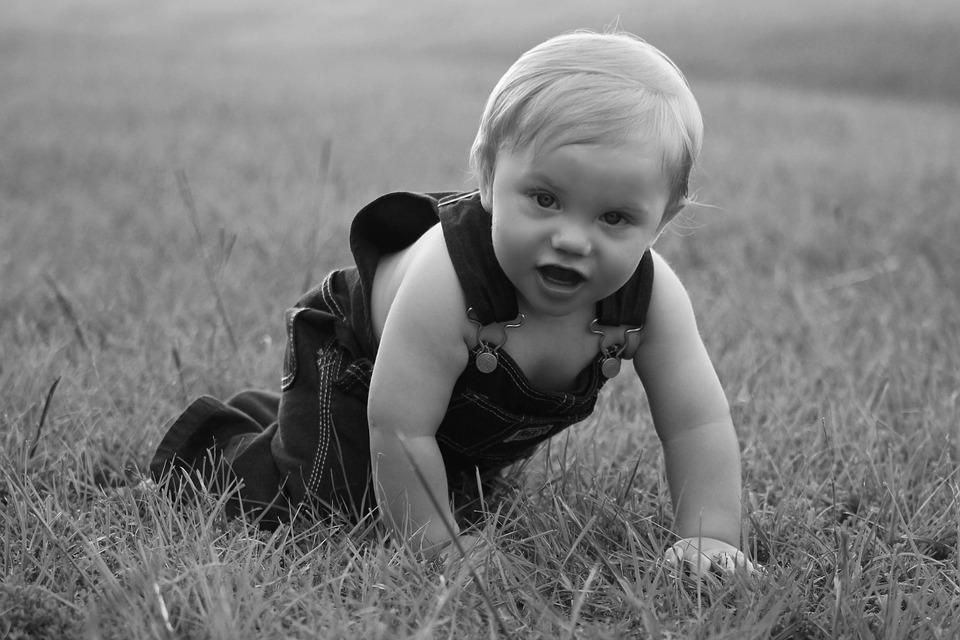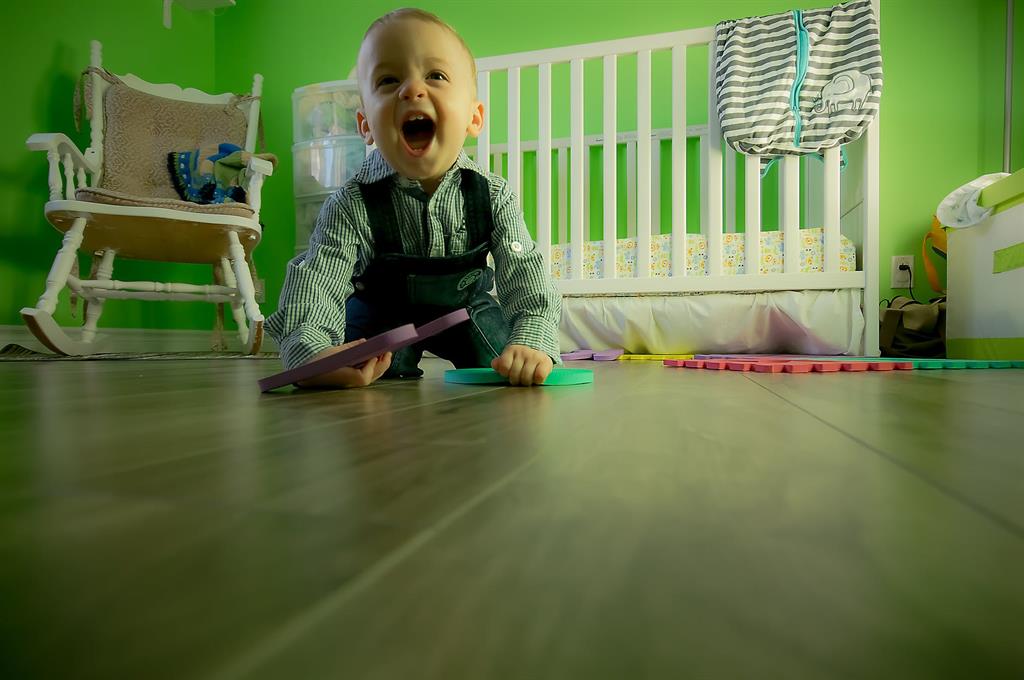Crawling: Is there a right or a wrong way?
Crawling does not only prepare your baby for walking, but is essential in assisting the development of many of your baby’s other skills.
Dr Eileen Africa and Sharnay Botha - Crawling is your baby’s first way of moving around and exploring the world around them, and marks the beginning of an entire new chapter.
Parents often think that it is fine for their child to skip the crawling milestone. So, the question is: Is it necessary for my child to crawl?
Crawling does not only prepare your baby for walking, but is essential in assisting the development of many of your baby’s other skills, for example:
- Body awareness
- Motor planning
- Visual perception
- Hand eye coordination
- Spatial awareness
- Improved memory
- Improved overall coordination
- Bone and muscle strength
- Improved balance
- Improved fine motor skills
- Joint stability
- Postural control
You’ll know when your baby is ready to start crawling when he/she starts to:
- Lie on their tummy and lift their upper-body and head off the floor.
- Roll over onto their backs and vice versa.
- Sit well without support.
- Move from sitting position to being on all fours.
- Start to rock back and forth while on all fours.
- Start to reach for toys while in the crawling position.
Although the typical style of crawling is the most beneficial for your baby’s overall
development, don’t worry if your baby opts for another method of crawling, like some of the examples below:
• Bum shuffling while in the sitting position.
• Crabbing while on their backs.
• Combat crawl or leopard crawl.
• Inchworm crawl.
• ‘Swim’ style crawl.
All the above-mentioned crawling styles still allow your baby to be mobile and explore.
How can I help my baby crawl?
1. Tummy time
• By playing on their tummies, babies develop the muscle strength in their necks, shoulders, trunks and backs to prepare them for crawling. Encourage your baby to participate in tummy time by placing their favourite toys in front of them to reach out for.
2. Baby massage and stimulation
• Make an appointment with a professional such as a Kinderkineticist or educate yourself by attending workshops.
Remember, your baby is unique and will develop at his or her own pace. Don’t put too much pressure on yourself or your baby, enjoy the coos and the cuddles. By playing an active role in your active baby’s ability to learn and move will do wonders for your child’s overall development.
Avoid: Say no to baby walkers for your baby. This hampers your baby’s muscle and bone development as well as their spatial awareness. It also takes away time where they can practice crawling while on the floor.
Tip: By the way, you don't have to invest in shoes just yet. Your baby won't need to wear footwear regularly until he's mastered walking.
*Stellenbosch Kinderkinetics, Department of Sport Science, Faculty of Medicine and Health Sciences, Stellenbosch University
KASSIE
References
ADOLPH, K. E., & JOH, A. S. (2007). Motor development: How infants get into the act. Introduction to infant development, 63-80.
GERBER, R. J., WILKS, T., & ERDIE-LALENA, C. (2010). Developmental milestones: motor development. Pediatrics in review, 31(7): 267-277.
VISSER, M. M., & FRANZSEN, D. (2010). The association of an omitted crawling milestone with pencil grasp and control in five-and six-year-old children. South African Journal of Occupational Therapy, 40(2): 19-23.
Definition
Motor planning:
This is a skill that allows us to remember and perform steps to make a movement happen. We use motor planning for all physical activities, including everyday tasks like brushing teeth or washing hands.
Parents often think that it is fine for their child to skip the crawling milestone. So, the question is: Is it necessary for my child to crawl?
Crawling does not only prepare your baby for walking, but is essential in assisting the development of many of your baby’s other skills, for example:
- Body awareness
- Motor planning
- Visual perception
- Hand eye coordination
- Spatial awareness
- Improved memory
- Improved overall coordination
- Bone and muscle strength
- Improved balance
- Improved fine motor skills
- Joint stability
- Postural control
You’ll know when your baby is ready to start crawling when he/she starts to:
- Lie on their tummy and lift their upper-body and head off the floor.
- Roll over onto their backs and vice versa.
- Sit well without support.
- Move from sitting position to being on all fours.
- Start to rock back and forth while on all fours.
- Start to reach for toys while in the crawling position.
Although the typical style of crawling is the most beneficial for your baby’s overall
development, don’t worry if your baby opts for another method of crawling, like some of the examples below:
• Bum shuffling while in the sitting position.
• Crabbing while on their backs.
• Combat crawl or leopard crawl.
• Inchworm crawl.
• ‘Swim’ style crawl.
All the above-mentioned crawling styles still allow your baby to be mobile and explore.
How can I help my baby crawl?
1. Tummy time
• By playing on their tummies, babies develop the muscle strength in their necks, shoulders, trunks and backs to prepare them for crawling. Encourage your baby to participate in tummy time by placing their favourite toys in front of them to reach out for.
2. Baby massage and stimulation
• Make an appointment with a professional such as a Kinderkineticist or educate yourself by attending workshops.
Remember, your baby is unique and will develop at his or her own pace. Don’t put too much pressure on yourself or your baby, enjoy the coos and the cuddles. By playing an active role in your active baby’s ability to learn and move will do wonders for your child’s overall development.
Avoid: Say no to baby walkers for your baby. This hampers your baby’s muscle and bone development as well as their spatial awareness. It also takes away time where they can practice crawling while on the floor.
Tip: By the way, you don't have to invest in shoes just yet. Your baby won't need to wear footwear regularly until he's mastered walking.
*Stellenbosch Kinderkinetics, Department of Sport Science, Faculty of Medicine and Health Sciences, Stellenbosch University
KASSIE
References
ADOLPH, K. E., & JOH, A. S. (2007). Motor development: How infants get into the act. Introduction to infant development, 63-80.
GERBER, R. J., WILKS, T., & ERDIE-LALENA, C. (2010). Developmental milestones: motor development. Pediatrics in review, 31(7): 267-277.
VISSER, M. M., & FRANZSEN, D. (2010). The association of an omitted crawling milestone with pencil grasp and control in five-and six-year-old children. South African Journal of Occupational Therapy, 40(2): 19-23.
Definition
Motor planning:
This is a skill that allows us to remember and perform steps to make a movement happen. We use motor planning for all physical activities, including everyday tasks like brushing teeth or washing hands.





Kommentaar
Republikein
Geen kommentaar is op hierdie artikel gelaat nie